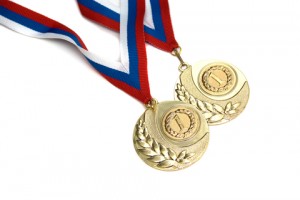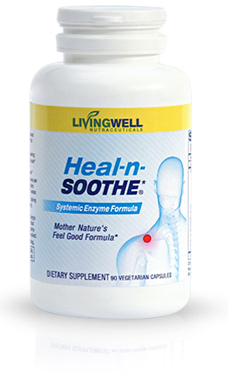 There is arguably no more important event in an athlete’s life than the Olympic games.
There is arguably no more important event in an athlete’s life than the Olympic games.
And this year at the Winter Olympics in Sochi we’ve already seen phenomenal tests of strength, endurance and dedication as the athletes compete to be world champions. This doesn’t come without years of practice, discipline and drive … as well as one heck of a recovery program!
How is it that Olympic athletes can train so hard, day in and day out, without succumbing to injury, physical stress, strain, and pain? And if their secret recovery program works so well for them (while pushing themselves to the extremes of physical and emotional limits), imagine what it could do for YOU in your life …
How Do Olympic Athletes Improve Performance and Speed Recovery?
There’s no one right answer to this, as each athlete’s program is carefully tailored to their needs, although there are some similarities throughout. For starters, you can bet that each athlete has a veritable army of professionals to guide them. We’re talking nutritionists, strength coaches, physiologists, psychologists, coaches … and more.
As an Olympic athlete, every aspect of their performance is analyzed and tended to, right down to what they eat for breakfast. As reported by Wired:[i]
“Rather than just eating their Wheaties like Bruce Jenner, they guzzle beet juice before a workout, because their team of nutritionists has determined that the nitrates it contains can improve aerobic exercise performance by as much as 2 percent.
They don’t just rub Bengay on tired muscles, they follow elaborate hydrotherapy regimens to limit muscle damage and reduce soreness by 16 percent.
And instead of pounding out hour after hour of training, they sometimes do a targeted workout of insanely high intensity, approved by their physiologists, which can give them better results in as little as four minutes.”
Some of the ‘secret’ foods enjoyed by Olympians to improve their performance and recovery include:[ii]
- Almond butter and honey sandwiches, to provide energy and boost endurance
- Pickle juice, high in sodium to prevent muscle cramps
- Chocolate milk (post-exercise), for its mix of carbohydrates and protein
- Cherry juice, which fights inflammation
- Beet juice, to help muscles use oxygen more efficiently
The German and Austrian Olympic Teams Ordered 1 Million of These Prior to the 1998 Winter Games …
Cortisone and non-steroidal anti-inflammatory drugs (NSAIDs) used to be the go-to treatment for pain among athletes. But that is changing. Fed up with their significant side effects, and looking for a safer, more effective avenue of relief, some Olympic teams are turning to proteolytic enzymes, which research shows may speed recovery and lessen pain after intense exercise.
Dr. Joseph Keul, a sports medicine physician, was among the first to use proteolytic enzymes to help Olympic athletes recover from injuries. They were so effective that the German and Austrian Olympic teams order more than 1 million tablets of the enzymes prior to the 1998 Winter Olympics.
Research shows, for instance:
- People with sports-related ankle injuries who took proteolytic enzymes had faster healing and less time away from training (reduced by about 50%)[iii]
- Proteolytic enzymes significantly speed healing of bruises and other mild athletic injuries as well as finger fractures[iv]
Further, as reported by PR Newswire:[v]
“Systemic [proteolytic] enzymes have been shown in numerous studies to support recovery from muscle and joint pain following strenuous exercise. In one study of boxers published in The Practitioner, systemic enzymes significantly reduced injuries such as cuts, broken vessels, bruising and sprains prior to entering the ring.
In another placebo-controlled study, 22 of 44 patients with sprained ankles received systemic enzymes for 10 days, and were found to have less pain and swelling, and greater mobility than the control group. More than 20 additional studies have confirmed the use of enzymes to promote recovery from injuries.
Other studies suggest that systemic enzymes may also help lessen the wearing away of muscle tissue caused by over-training.”
If It’s Good Enough for Olympic Athletes …
Then surely it’s good enough for helping you avoid post-workout pain and strains … as well as to help heal ongoing chronic pain of all kinds. The fact is, even if you’re just heading home from the gym or a weekend tennis match, the proper recovery will ensure that you’re able to heal and repair the ‘damage’ that exercise caused so you’ll grow stronger and be able to work out even harder next time.
 Among the most important elements are a proper cool down, stretching and hydration, which you can read about in detail here. However, perhaps most important is reaching for a bottle of Heal-n-Soothe, which is an all-natural inflammation fighter that promotes healthy muscle repair.
Among the most important elements are a proper cool down, stretching and hydration, which you can read about in detail here. However, perhaps most important is reaching for a bottle of Heal-n-Soothe, which is an all-natural inflammation fighter that promotes healthy muscle repair.
Heal-n-Soothe’s secret weapon for your recovery is its concentrated dose of proteolytic enzymes, which eat excess fibrin and scar tissue for lunch, helping every microscopic muscle tear to heal properly to deliver a full range of motion while reducing inflammation, tightness and pain. These enzymes work at a cellular level, ensuring your workout recovery starts from the inside out (plus, it also contains 12 of nature’s best anti-inflammatory compounds).
6 More Secret Weapons of the Olympians …
Not all of the recovery efforts of Olympic athletes are as simple and foundational as proteolytic enzyme therapy. Other methods include:
- Prolotherapy: Prolotherapy stimulates localized inflammation to help your body heal areas with lower blood supply (such as tendons and ligaments) — the exact opposite effect of cortisone shots. Prolotherapy has been found to help tendons and ligaments rebuild as much as 40% stronger than the originals. If you have joint pain, you may be interested to try prolozone therapy, which adds critically important components to standard prolotherapy: ozone and nutrients to facilitate healing and repair.
- Acupuncture: Acupuncture works to realign meridians of energy by stimulating a certain combination of 2,000 points on the body. The practice most likely relieves pain by stimulating your central nervous system to release hormones and neurotransmitters and boost your immune system.
- Platelet-Rich Plasma (PRP) Therapy: With this therapy a vial of your blood is spun in a centrifuge to separate the platelet-rich plasma. The PRP is injected into the site of your injury, where it is said to release growth factors that facilitate tissue healing.
- Magnetic Pulse Therapy: This involves sending short rapid pulses of a specific electromagnetic frequency into the knee or other problem area, where it causes a biochemical response that relieves pain felt from inflammation.
- Low-Intensity Laser Therapy: The lasers are able to penetrate beneath your skin and can stimulate normal cell activity, speed up healing and reduce inflammation.
- Infrared Sauna Therapy: The far-infrared heat used in this type of sauna leads to vibration effects at the molecular level, which improves transportation of oxygen and nutrients, ultimately helping to support regeneration and healing. The thermal effect of deep heat on your tissues causes blood vessels in capillaries to dilate, which improves blood circulation and promotes pain-relief healing and wellness. You can get this same benefit at home by using a far-infrared heating pad <– click here to see our top recommendation!
What is interesting to note is that many of these therapies … proteolytic enzymes, acupuncture, nutrition and infrared heat … can be used simply by anyone looking to improve their athletic performance and recovery. They’re not just for Olympians!
So if you’re a weekend warrior, a gym rat, a star on your local softball team … or if you have aches and pains that you want healed for good, do give these a try (and be sure to stay tuned to the blog for more pain-relieving, healing tips).
P.S.
I forgot to mention one more pain relief strategy that two-time USA Olympian Debbi Lawrence said helps her “recover from intense workouts much faster” and her “legs have never felt better.” You can read about it here.

